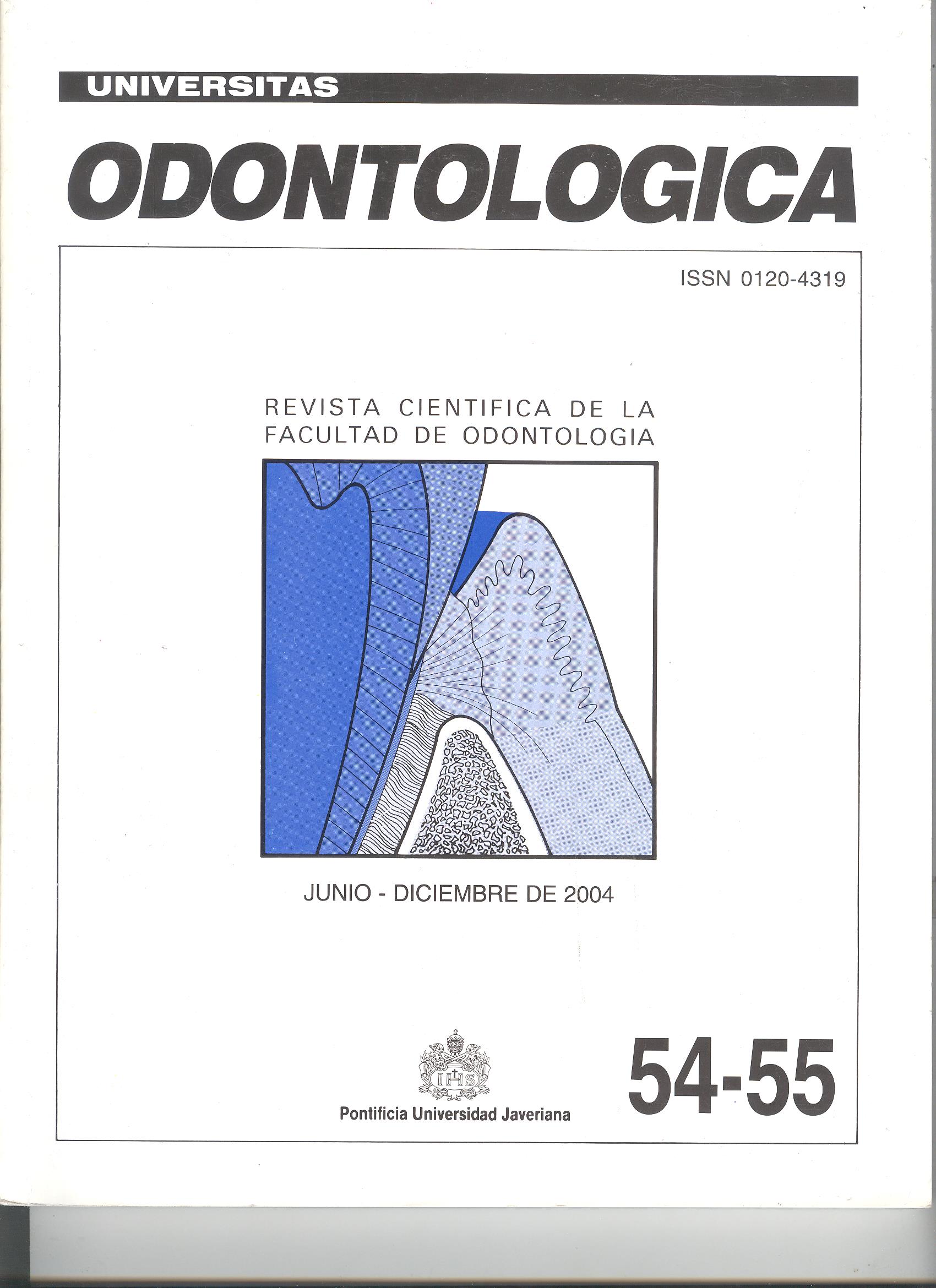Abstract
BACKGROUND: The purpose of the Military Forces is to keep the defense, independence and integrity of the Colombian territory. In the accomplishment of this mission, there are permanent confrontations, losing lots of lives. For that reason, it is absolutely necessary to have an appropriate, authentic, fast and inexpensive identification system, like the dental chart. OBJECTIVES: To determine if the format of dental chart used at Air Force Military Transportation Commando (CATAM) was appropriate, to recognize the value of doing a dental record to all the personnel, and to identify the causes of changes in the dental chart. METHODS: A descriptive observational study was carried out. The sample consisted of 27 actualized dental records. The inclusion criteria were to be officer, subofficer, soldier and private, working at CATAM for more than six months. The exclusion criteria were the records of those who voluntarily retired of the study or who were not part of the workforce of the Commando. RESULTS: Environment. Only 61 out of the 1044 inhabitants in CATAM had a dental record. Among the 27 actualized dental records (100%), 25 (92.5%) showed changes, being dental caries the main factor of modification. Format. The conventions utilized in the charts were wrong, the dental surfaces were not registered, and none of formats had date of issue. Findings. It was found, among the actualized records, that 100% of the pilots and the flight crew had bruxism, finding not registered. CONCLUSION: CATAM did not have an appropriate identification system.
Congreso de la República de Colombia. Ley 38 de 1993, “por la cual se unifica el sistema de dactiloscopia y se adopta la carta dental para fines de Identificación”
Instituto Nacional de Medicina Legal y Ciencias Forenses. Proyecto de Ley 38. Instructivo para diligenciar la carta dental
Sweet D, Pretty A. A look at Forensic Dentistry. Part 1: The role of teeth in the determination of human identity. Br Den J 2001 Apr 14; 190(7): 359-66
Delattre V, Stimson P. Self-assessment of the forensic value of dental records. J Forensic Sci 1999 Sep; 44(5): 906-9
Bowers C. Jurisprudence issues in Forensic Odontology. Dent Clin North Am 2001 Apr; 45(2): 399-415
Cecci R, Cipolloni L, Nobile M. Incorrect identification of a military pilot with international implications. Int J Legal Med 1997; 110(3): 167-9
República de Colombia, Fuerza Aérea Colombiana. Reglamento de aptitud psicofísica para ingreso y permanencia en el servicio para el personal de la Fuerza Aérea Colombiana
Zero D. Dental caries process. Dent Clin North Am 1999 Oct; 43(4): 635-63
Sousa G. Emergencias en endodoncia. 1ª ed. Caracas, Venezuela: Gabriel C. Santa Cruz, 1995; 87
Echeverri E, Sencherman G. Neurofisiología de la oclusión, 2ª ed. Bogotá, D. C., Colombia: Monserrate, 1995; 244-7
República de Colombia, Ministerio de salud. Resolución 8430 de octubre 4 de 1993. “Por la cual se establecen las normas técnicas, científicas y administrativas para la investigación de la salud”
República de Colombia. Constitución Política de Colombia. Título II, De los derechos, las garantías y los deberes. Capítulo I, de los derechos fundamentales. Artículos 14 y 15
Sweet D. Why a dentist for identification? Dent Clin North Am 2001 Apr; 45(2): 237-51
Bell G. Dentistry’s role in the resolution of missing and unidentified persons cases. Dent Clin North Am 2001 Apr; 45(2): 293-308
República de Colombia. Ley 48 de marzo 3 de 1993. Artículo 1

This work is licensed under a Creative Commons Attribution 4.0 International License.
Copyright (c) 2004 Universitas Odontologica


